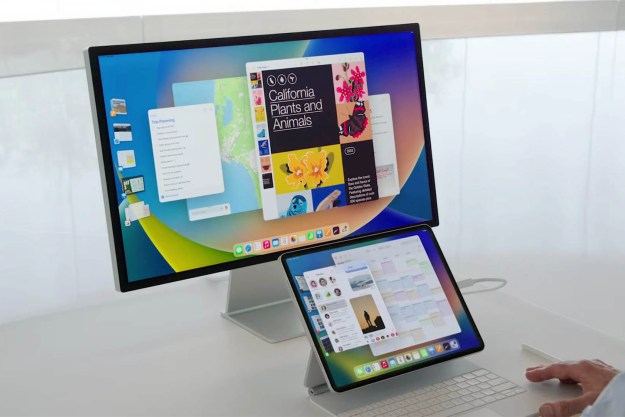 Apple Computer made a lot of press earlier this month by introducing Intel-powered iMacs and the new MacBook Pro notebook earlier this month at Macworld Expo, touting performance of the new iMac with the new Intel Core Duo CPU as being up to twice as fast as it PowerPC G5-based predecessor. However, in tests, Macworld Labs finds the speed gains in the Intel-based systems far less substantial, and, for software which hasn’t been recompiled for Intel systems, performance is more like one-half that of the previous model.
Apple Computer made a lot of press earlier this month by introducing Intel-powered iMacs and the new MacBook Pro notebook earlier this month at Macworld Expo, touting performance of the new iMac with the new Intel Core Duo CPU as being up to twice as fast as it PowerPC G5-based predecessor. However, in tests, Macworld Labs finds the speed gains in the Intel-based systems far less substantial, and, for software which hasn’t been recompiled for Intel systems, performance is more like one-half that of the previous model.
Instead of focussing on processor specifications, Macworld Labs conducted real-world tests with real applications Mac users are likely to use, reasoning that the overall user experience of a computer’s performance is more relevant to productivity and efficiency than theoretical computational capability.
Macworld focussed on two types of applications: so-called Universal Applications, which can run natively on either the new Intel-based Macintoshes or existing PowerPC-based systems, and existing PowerPC software, most of which can run flawlessly on Intel-based Macs thanks to Rosetta, a low-level technology which enables PowerPC code to run on Intel chips. Right now, most Universal applications are from Apple itself (including iLife ’06 stalwarts like iMovie, iPhoto, and iDVD) although third-party developers are also quickly releasing Universal Applications.
Macworld found that Universal Applications almost always outperform their PowerPC equivalents on Apple’s new Intel-based Macs, but are typically only 1.1 to 1.3 times as fast, rather than the double-time speed improvements Apple implies. However, the most sobering numbers come from Macworld Labs’ tests of existing PowerPC applications running on Intel Macs under Rosetta, where real-world performance was often less than half that of previous PowerPC-based Macs.
The results may make early adopters of Apple’s new Intel-based Macs take pause: although Universal Applications are indeed faster on the new architecture, comparatively few Universal binaries are currently available, and major productivity applications (like Microsoft Office) haven’t even announced a timetable for converting to Universal binaries, meaning many everyday applications would have to be used
Editors' Recommendations
- iMac deals: New, renewed and refurbished iMac computers
- The 5 best iMac alternatives in 2024
- How to get Spotify on a MacBook, Mac Mini, or iMac
- These accessories will take your iMac to the next level
- Mac Studio vs. iMac vs. Mac mini: don’t make a mistake

